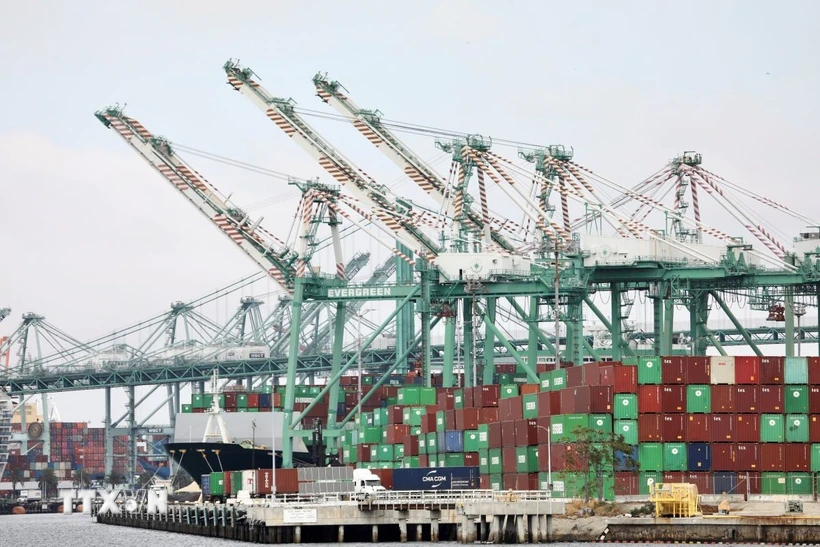US Sudden increase in cargo volume, seaports at risk of congestion
Posted on: 10/06/2025

View of Los Angeles port in California, USA. (Photo: THX/TTXVN)
Preliminary forecasts show that container volumes at the US ports of Los Angeles and Long Beach will start to surge in the second week of June, surpassing 100,000 TEUs per week (TEUs: a unit of measurement equivalent to a 20-foot container). Are these ports headed for another congestion crisis?
According to maritime consultancy eeSea, total Asia-to-North America capacity will reach 2.4 million TEUs in June – up 400,000 TEUs from May. That figure is expected to rise further to 2.8 million TEUs in July. Much of that growth is targeted at the US West Coast, particularly the ports of Los Angeles and Long Beach.
Data provider Sea-Intelligence reports a similar trend. Its latest weekly update shows that Asia-US West Coast capacity increased 17% year-on-year in June 2025, and is forecast to increase 19% in July 2025.
Meanwhile, East Coast capacity growth is more modest—up just 7% by June 2025, but is projected to reach the same 19% increase as on the West Coast by July 2025. These figures are based on current carrier schedules, which are subject to change.
The big question is whether Los Angeles and Long Beach can handle the influx of goods. Will the port congestion seen during the COVID-19 pandemic return?
Initial forecasts suggest that container volumes at both ports will begin to increase in the second week of June, surpassing 100,000 TEUs per week. Volumes will continue to increase in the third week. Although data for the fourth week is not yet available, estimates suggest that traffic will remain high.
Several additional vessels are expected to arrive at the port in late June and early July, suggesting cargo traffic will remain high until at least mid-July.
Both ports previously handled their highest volume of imports from Asia in 2021 during the COVID-19 pandemic (around 10 million TEUs for the entire year). The Port of Los Angeles alone handled a record 520,000 TEUs in May 2021, while the Port of Long Beach hit a single-month peak of 400,000 TEUs that same month.
Will there be a similar surge of cargo this time? Senior executives at leading shipping and port companies say the tariff deferrals may not lead to the same boom in shipping seen during the COVID-19 pandemic.
Much of the inventory sitting in warehouses was shipped quickly after tariffs were suspended on May 14. And even if buyers place new orders, they won’t be shipped until late June or July because of manufacturing delays.
Moreover, although the US has suspended its 125% reciprocal tariffs on China, the 30% tariffs added this year – on top of those imposed since 2018 – mean that US-China trade has not returned to normal. The US-China trade truce may provide temporary relief, but it is unlikely to create a lasting boom.
Freight rates on the trans-Pacific trade have spiked in recent weeks. But does this really reflect the strength of demand? To determine whether the shipping market is “hot” or “cold,” look at the ratio of cargo shipped at long-term contract rates (NAC) to cargo shipped at market prices at the time of shipment (spot prices).
If the ratio of spot prices to contract prices is high, it indicates that demand for transportation is increasing strongly. Conversely, if the ratio of contract prices to contract prices is dominant, it indicates that demand for transportation is stable or weak.
Currently, many freight forwarders can still book slots at lower NAC prices, indicating that there is still excess capacity.
So will the ports get clogged? A sudden and sustained surge in cargo volumes could strain port operations. However, if the surge only lasts for two to three weeks, the ports can still handle it. If imports increase by more than 20% above normal levels and continue through July, the risk of congestion increases dramatically.
In short, the ports of Los Angeles and Long Beach are entering a high-alert phase. Disruptions, if any, could begin in late July./.